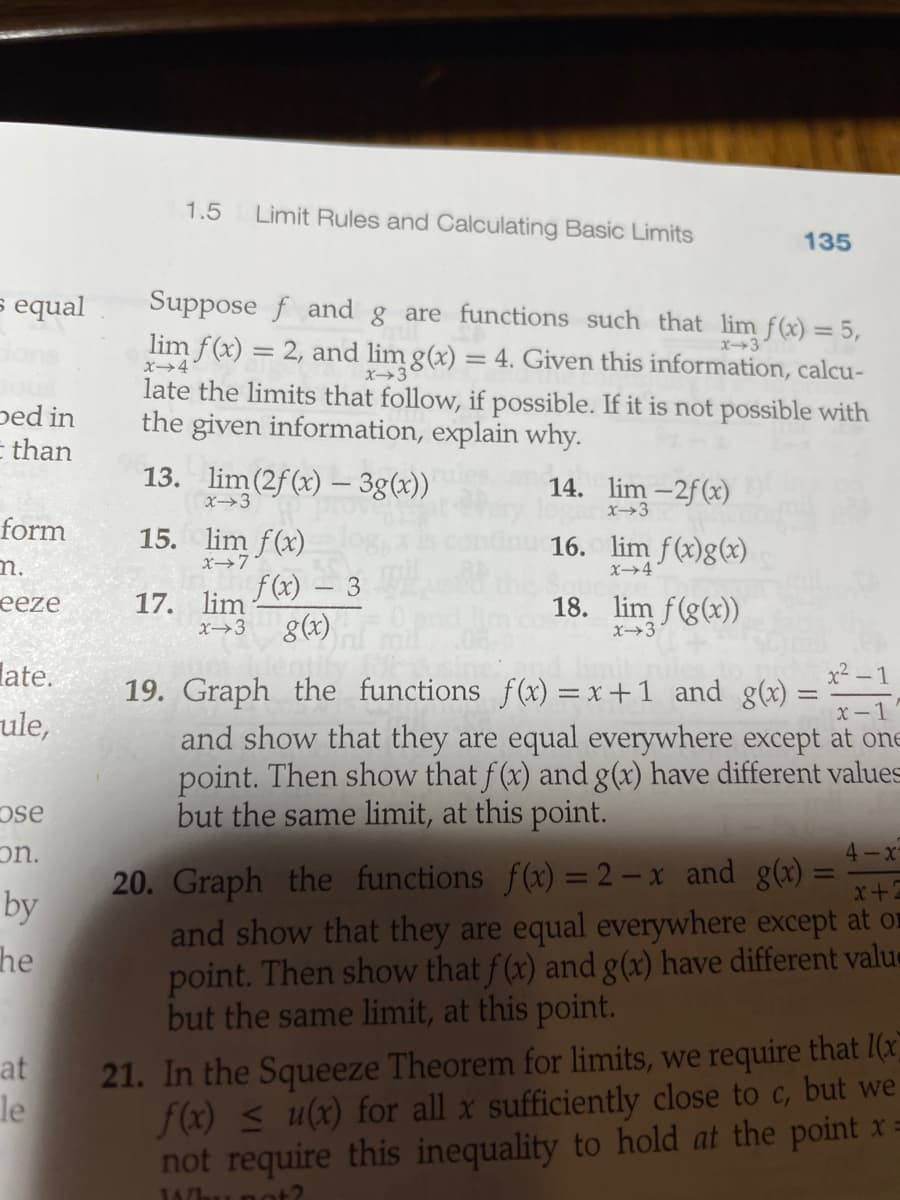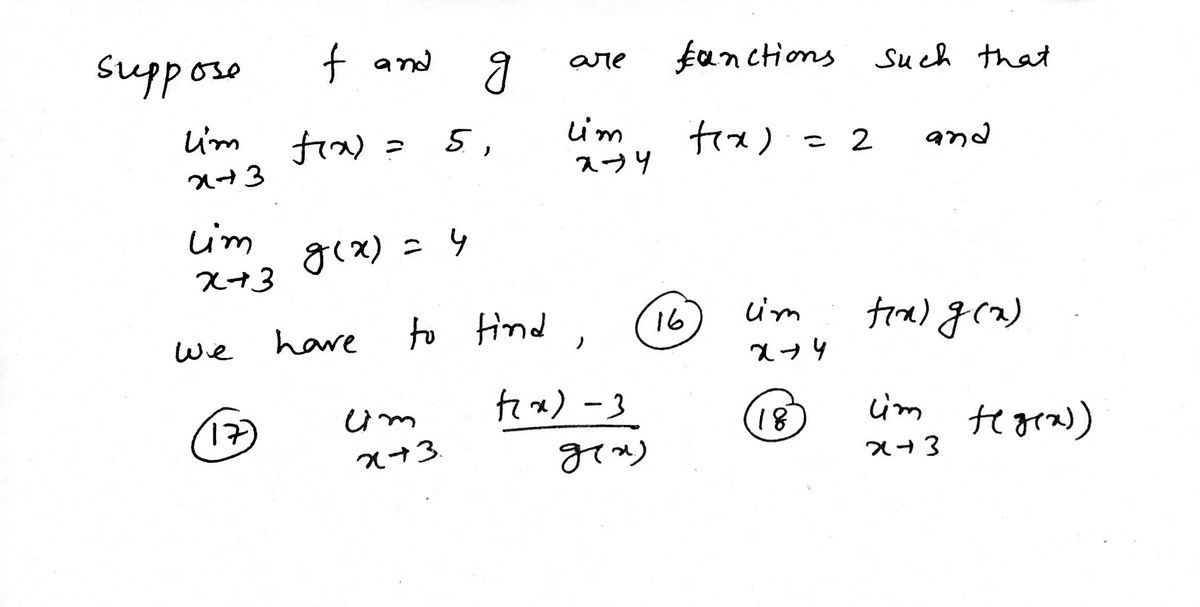Suppose f and g are functions such that lim f(x) = 5, %3D lim f(x) = 2, and lim g(x) = 4. Given this information, calcu- late the limits that follow, if possible. If it is not possible with the given information, explain why. x3 %3D x4 X3 13. lim (2f(x) – 3g(x)) 14. lim -2f(x) X3 X→3 15. lim f(x) 16. lim f(x)g(x) X→7 X4 17. lim (x) - 3 18. lim f(g(x)) x3 x→3 8(x) x2 -1 19. Graph the functions f(x) = x+1 and g(x) :
Suppose f and g are functions such that lim f(x) = 5, %3D lim f(x) = 2, and lim g(x) = 4. Given this information, calcu- late the limits that follow, if possible. If it is not possible with the given information, explain why. x3 %3D x4 X3 13. lim (2f(x) – 3g(x)) 14. lim -2f(x) X3 X→3 15. lim f(x) 16. lim f(x)g(x) X→7 X4 17. lim (x) - 3 18. lim f(g(x)) x3 x→3 8(x) x2 -1 19. Graph the functions f(x) = x+1 and g(x) :
Functions and Change: A Modeling Approach to College Algebra (MindTap Course List)
6th Edition
ISBN:9781337111348
Author:Bruce Crauder, Benny Evans, Alan Noell
Publisher:Bruce Crauder, Benny Evans, Alan Noell
Chapter1: Functions
Section1.2: Functions Given By Tables
Problem 32SBE: Does a Limiting Value Occur? A rocket ship is flying away from Earth at a constant velocity, and it...
Related questions
Question
16-18 please

Transcribed Image Text:1.5
Limit Rules and Calculating Basic Limits
135
Suppose f and g are functions such that lim f(x) = 5,
lim f(x) = 2, and lim g(x) = 4. Given this information, calcu-
late the limits that follow, if possible. If it is not possible with
the given information, explain why.
s equal
X3
X4
X3
ped in
than
13. lim (2f (x) – 3g(x))
14. lim -2f(x)
X→3
X→3
form
15. lim f(x)
16. lim f(x)g(x)
m.
eeze
X→4
17. lim (x) – 3
8(x)
18. lim f(g(x))
X→3
x→3
late.
ule,
x² – 1
19. Graph the functions f(x) =x+1 and g(x)
and show that they are equal everywhere except at one
point. Then show that f (x) and g(x) have different values
but the same limit, at this point.
x - 1
ose
on.
4-x
20. Graph the functions f(x) = 2 – x and g(x) =
and show that they are equal everywhere except at or
point. Then show that f (x) and g(x) have different value
but the same limit, at this point.
%3D
x+2
by
he
at
21. In the Squeeze Theorem for limits, we require that 1(x)
le
f(x) s u(x) for all x sufficiently close to c, but we
not require this inequality to hold at the point x =
Expert Solution
Step 1

Step by step
Solved in 2 steps with 2 images

Knowledge Booster
Learn more about
Need a deep-dive on the concept behind this application? Look no further. Learn more about this topic, calculus and related others by exploring similar questions and additional content below.Recommended textbooks for you

Functions and Change: A Modeling Approach to Coll…
Algebra
ISBN:
9781337111348
Author:
Bruce Crauder, Benny Evans, Alan Noell
Publisher:
Cengage Learning

Functions and Change: A Modeling Approach to Coll…
Algebra
ISBN:
9781337111348
Author:
Bruce Crauder, Benny Evans, Alan Noell
Publisher:
Cengage Learning